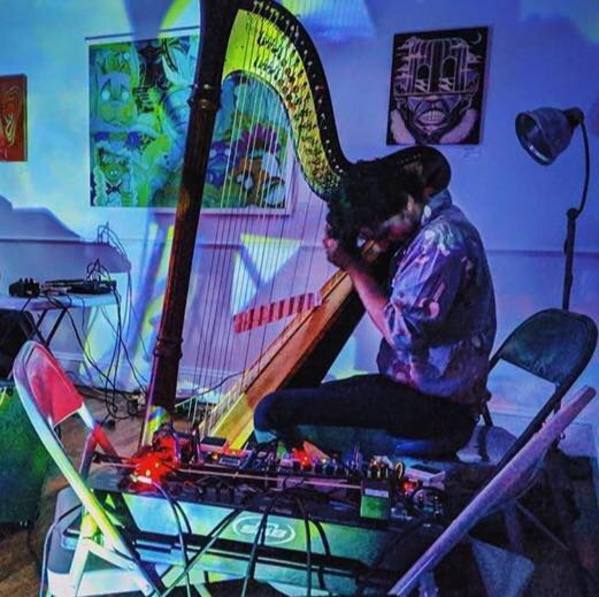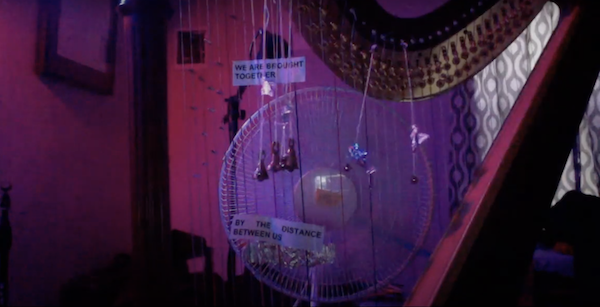by Mike Telin

On Sunday, November 7 at 7:00 pm at the Praxis Fiber Workshop, the Cleveland Uncommon Sound Project will present Robert Dick in an evening of solo works as well as group improvisations with Dana Jessen, bassoon, Bob Drake, hardware electronics, and Stephan Haluska, harp. Tickets are available at the door or online.
“I’m looking forward to returning to Cleveland,” the 71-year-old said. “I’ve had lots of good experiences there.”
When asked about his — well — improvised program, Dick said that it will be somewhat stream-of-consciousness. “The flute is an unusual instrument in improvised music, so people tend to focus on the instrument and not the music. But all instruments have exactly the same sound, silence — it’s the human that plays them.”
Dick said that the last year and a half provided him the opportunity to work on some new musical ideas. “The pandemic, if you want to look at it in the most positive way, was a fantastic period to work on your solo music. So I was at home working away. I was working on different kinds of polyphony and I worked quite a bit on my personal vocal style. So, all I can promise people is that it won’t be something they’ve heard before. I’ll try to go wherever the music asks me to go, and I hope they like it.”
The 2014 National Flute Association Lifetime Achievement Award winner said he’ll be playing his bass flute in F — half again as large as the normal bass flute, which he will also bring. He’ll also have his invention, the glissando head joint, which allows the player to achieve effects similar to the whammy bar of an electric guitar.
How does an improviser figure out how to begin, and where does their inspiration come from? “That is a very interesting moment, and the energy of the people in the room is something that’s so important to feel. I never try to isolate myself, I think that’s a huge mistake. People are sitting there offering you energy and the most gracious thing you can do is to accept the energy and use it.” He added that when an audience is present, he’s often able to do many things that he wouldn’t be able to do if he were home alone.
“I do my utmost not to think about myself — the worst possible thing you can think about while you’re creating is yourself. Or to think about what people are thinking — do they like it or not — that pulls you out of the music. So in general, I’m the least of my concerns.”
When it comes to improvising with a group, Dick said the key to success is “really listening to each other, and very quickly getting a sense of what this particular group can be. If everybody is concerned with the music that is being created and not thinking — oh, look what I can do — the results will be good. I’m looking forward to Cleveland and playing with new people. I hope we’ll bring each other to some wonderful new places.”
As an author, Dick has published three books — Circular Breathing for the Flutist, The Other Flute: A Performance Manual of Contemporary Technique, and Tone Development through Extended Techniques, as well as two volumes of Flying Lessons: Six Contemporary Concert Etudes.

Haluska, a harpist and seasoned improviser, agreed with Robert Dick — the key to a successful group improvisation is listening. “Stepping onto the stage and listening and understanding what everybody else is doing can result in a composition in real time.”
He noted that there are not a lot of people improvising on the harp. “There’s a handful of people doing it. But no matter where I am, I’m always asked if I play in an orchestra. For a lot of people, an orchestra concert is the only time they see a harp.”
Haluska said that he does a lot with prepared harp — alligator clips and paper or foil between the strings — and uses auxiliary tools such as violin bows. “The harp is such a visual instrument. If you’re listening to a prepared piano it’s hard to see what is happening, but with the harp, it’s all there for everybody to see.”
The proceeds from Sunday’s concert will go toward funding CUSP’s annual Re:Sound Festival. “We will be producing the festival from June 9 through 12. We’re currently going through dozens of submissions. It’s inspiring to listen to all of these talented musicians,” Haluska said. “Some of them are familiar, but a lot are new which is really exciting.”
On Saturday, November 6 at 1:00 pm at St. Paul’s Episcopal Church, Robert Dick will present a recital and master class for the Greater Cleveland Flute Society. The program includes Dick’s Lookout, Fish are Jumping, Sliding Life Blues, and Time is a Two-Way Street. Click here for more information including a link to a live stream.
Published on ClevelandClassical.com November 2, 2021.
Click here for a printable copy of this article



